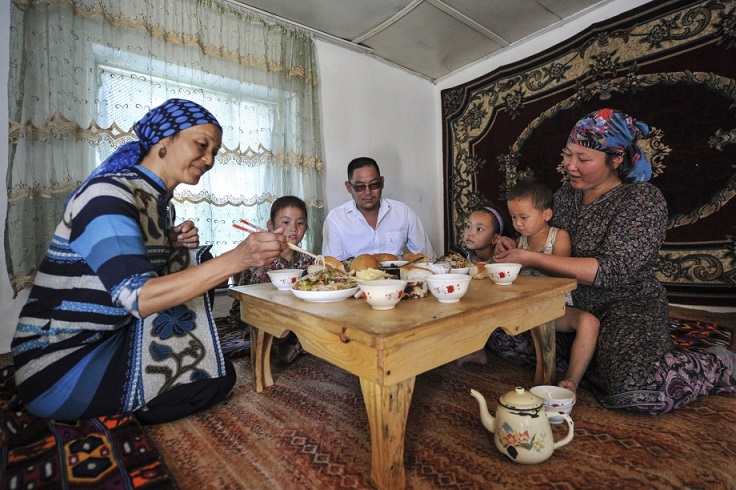Cassava Intake and Vitamin A Status among Women and Preschool Children in Akwa-Ibom, Nigeria
Nigeria, 2011
Get MicrodataIdentification
NGA_2011_CIVASWPCAI_v01_EN_M_v01_A_OCS
Cassava Intake and Vitamin A Status among Women and Preschool Children in Akwa-Ibom, Nigeria
| Name | Country code |
|---|---|
| Nigeria | NGA |
Individual Food Consumption/Dietary Survey [hh/ifcs]
A cross-sectional survey was conducted in rural to moderately-urbanized areas of Akwa-Ibom, a state identified as having high cassava consumption and high vitamin A deficiency prevalence among children. The specific aims were: 1) to quantify the cassava and nutrient intake, and 2) to assess the vitamin A and iron status among preschool children and women of childbearing age.
Sample survey data [ssd]
Individuals
Scope
The survey collected information on:
- SUBJECTS: information on the participants such as age, sex and geographical location.
- CONSUMPTION: information on all foods consumed by each participant in each survey day, including quantities and nutrient values.
The population groups covered in the dataset were children 6-59 months old and women of childbearing age 18-49 years old.
Coverage
Sub-national coverage, rural to moderately-urbanized areas.
Producers and sponsors
| Name |
|---|
| International Institute of Tropical Agriculture (IITA) |
Sampling
The sample size was based on an estimated 30% prevalence of low serum retinol among children as a primary outcome among children aged 6–59 months and women of childbearing age. The final sample size of 660 households was calculated accepting a type I error of 0.05, a design effect of 2 and adjusting for a 15% drop out rate. The sampling procedure was a multistage cluster selection process of local government areas (LGAs) and further by enumeration areas (EAs), which is the smallest geographical cluster of households. The LGAs are grouped according to the level of urbanization (rural, moderate-urban, and urban) within each state. A comprehensive list of all EAs in selected local government areas was obtained from the State National Population Commission. Of the 31 LGAs in Akwa Ibom (16 rural, 10 moderate-urban, and 5 urban), 10 were randomly selected from the 26 non-urban LGAs, followed by the random selection of three EAs within each LGA. Therefore, each LGA comprised 3 clusters for a total of 30-cluster survey or 22 households per cluster for a total of 660 households.
No surveys weight were used in this survey.
Data collection
| Start | End |
|---|---|
| 2011-08-01 | 2011-08-31 |
| Start date | End date |
|---|---|
| 2011-08-01 | 2011-08-31 |
- Face-to-face [f2f]
| Affiliation |
|---|
| International Institute of Tropical Agriculture |
An interactive multiple-pass 24-hour recall method was used. To maximize data quality, interviewers were required to submit all questionnaires to the data quality editor (DQE) immediately after leaving the household and any existing error was corrected in the field under the DQE’s supervision. Mother trainers visited each village two days prior to the interviews to explain the 24-hour recall methodology. Plates and cups were distributed during the training to foster individual eating and therefore to increase the accuracy of individual reporting; to familiarize them with the picture charts; and to emphasize the importance of not altering their eating habits.
Data Access
| Is signing of a confidentiality declaration required? | Confidentiality declaration text |
|---|---|
| yes | The users shall not take any action with the purpose of identifying any individual entity (i.e. person, household, enterprise, etc.) in the micro dataset(s). If such a disclosure is made inadvertently, no use will be made of the information, and it will be reported immediately to FAO |
Micro datasets disseminated by FAO shall only be allowed for research and statistical purposes. Any user which requests access working for a commercial company will not be granted access to any micro dataset regardless of their specified purpose. Users requesting access to any datasets must agree to the following minimal conditions:
- The micro dataset will only be used for statistical and/or research purposes;
- Any results derived from the micro dataset will be used solely for reporting aggregated information, and not for any specific individual entities or data subjects;
- The users shall not take any action with the purpose of identifying any individual entity (i.e. person, household, enterprise, etc.) in the micro dataset(s). If such a disclosure is made inadvertently, no use will be made of the information, and it will be reported immediately to FAO;
- The micro dataset cannot be re-disseminated by users or shared with anyone other than the individuals that are granted access to the micro dataset by FAO.
International Institute of Tropical Agriculture (IITA); HarvestPlus, International Food Policy Research Institute (IFPRI). 2015. Dietary intakes, vitamin A, and iron status of women of childbearing age and children 6-59 months of age from Akwa Ibom state in Nigeria. Washington, DC: IFPRI [dataset]. https://doi.org/10.7910/DVN/29604. Harvard Dataverse. Version 1.
Contacts
| [email protected] |
Metadata production
DDI_NGA_2011_CIVASWPCAI_v01_EN_M_v01_A_OCS_FAO
| Name | Affiliation | Role |
|---|---|---|
| Office of Chief Statistician | Food and Agriculture Organization | Metadata producer |
Metadata version
NGA_2011_CIVASWPCAI_v01_EN_M_v01_A_OCS_v01
